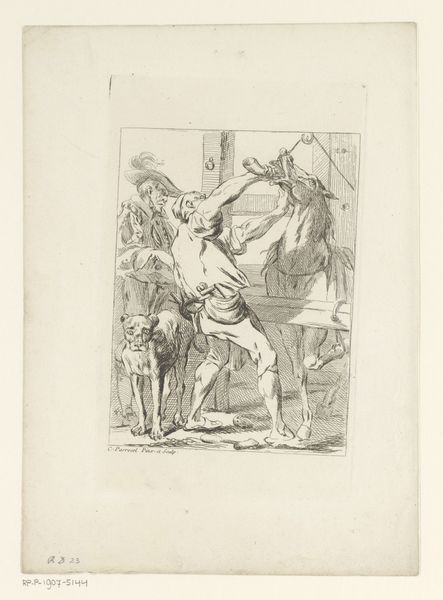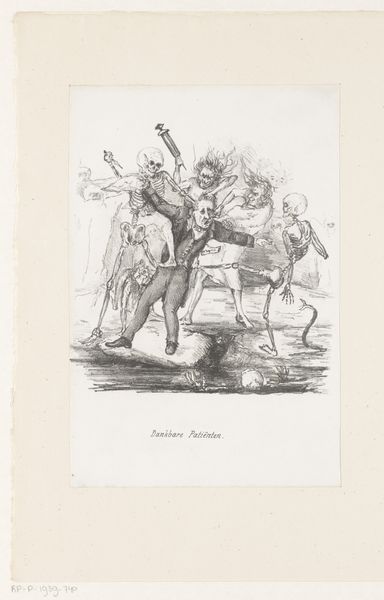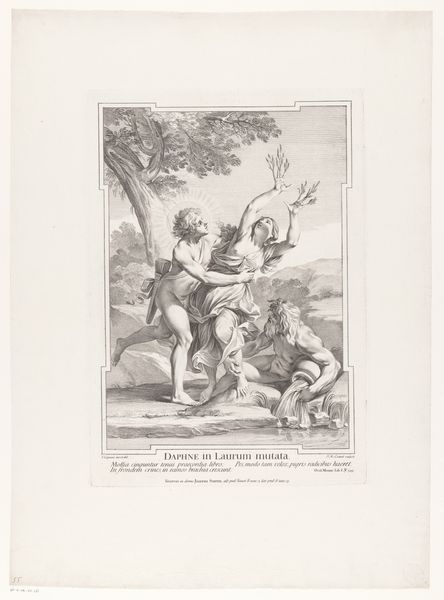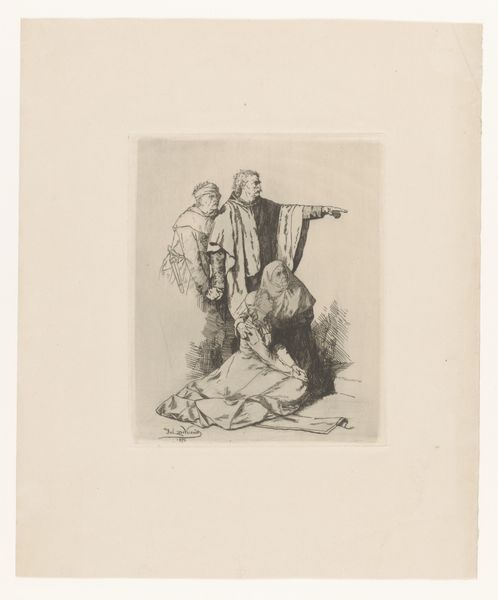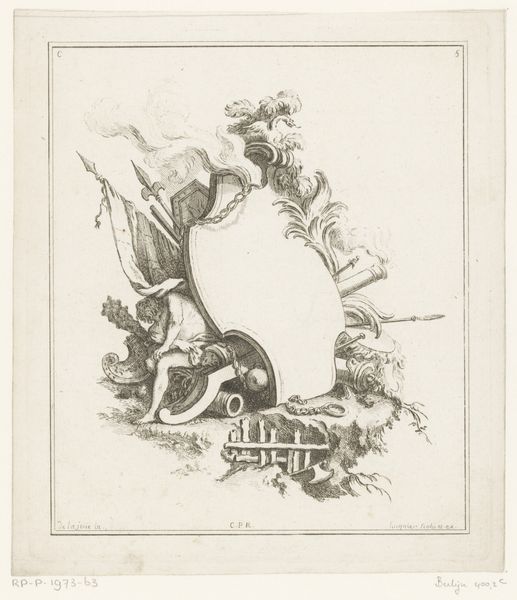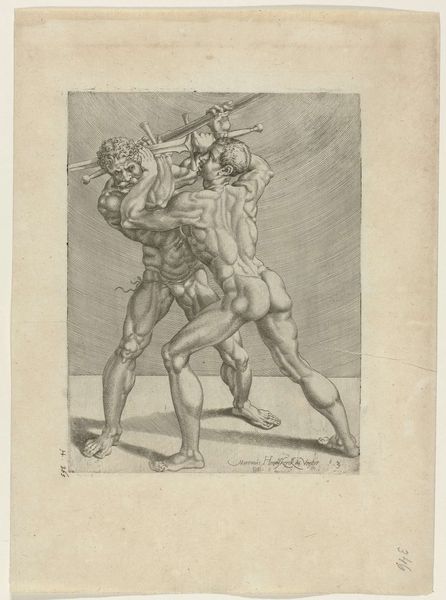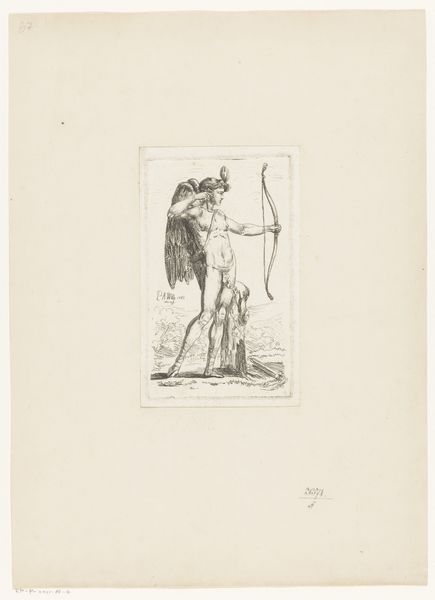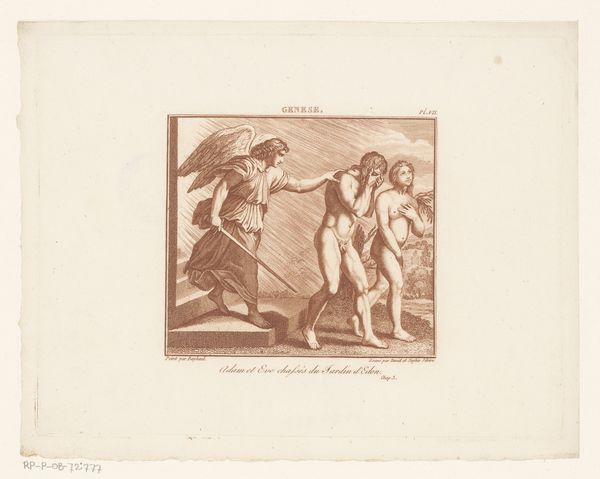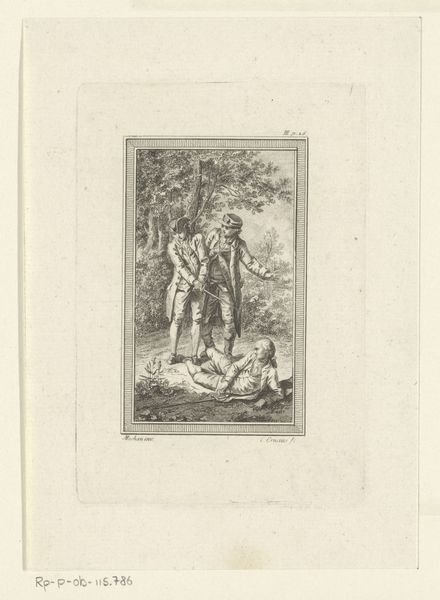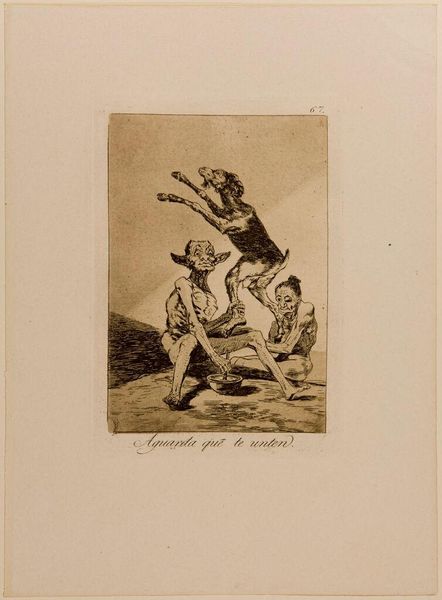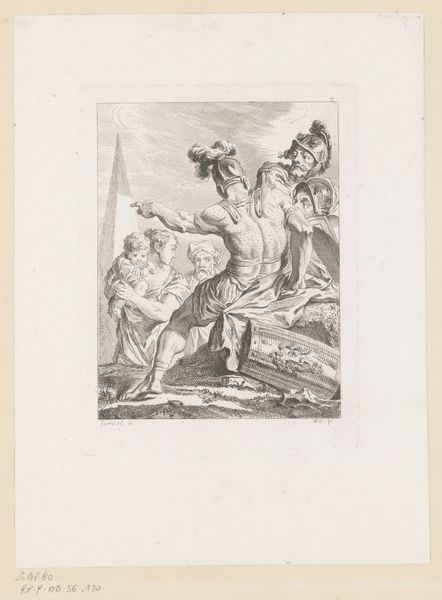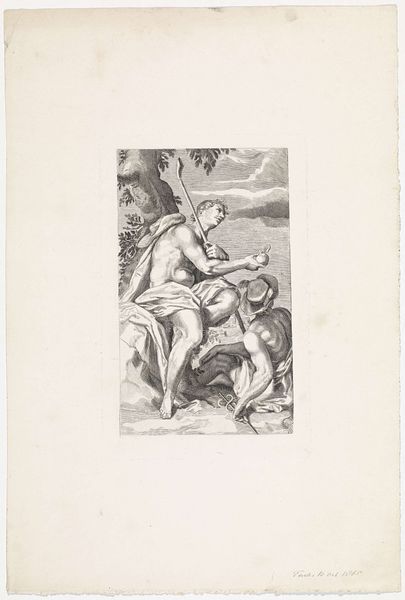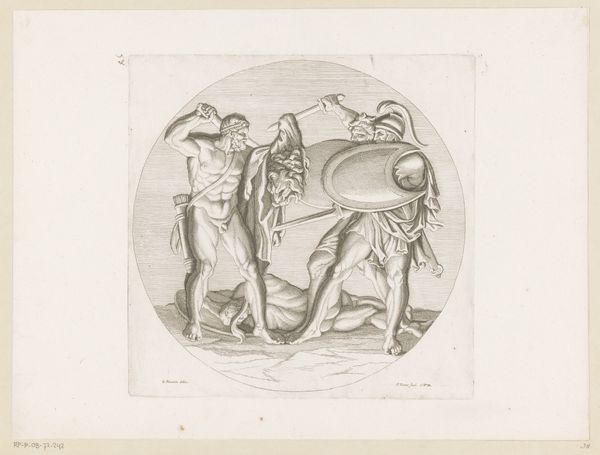
drawing, ink, pen
#
drawing
#
caricature
#
pencil sketch
#
figuration
#
ink
#
romanticism
#
pen-ink sketch
#
pen
Dimensions: height 313 mm, width 241 mm
Copyright: Rijks Museum: Open Domain
This print, made around 1830 by an anonymous artist, presents two monkeys dressed in human clothes, seemingly engaged in a conflict. The dominant symbol here is the monkey itself, which has long been used in art to mock human follies. Monkeys appear throughout art history as symbols of imitation, lust, greed, and foolishness. These symbols are often used to expose the hypocrisy and darker aspects of human nature. From medieval illuminated manuscripts to Renaissance paintings, monkeys serve as visual metaphors for the base instincts that humanity often tries to mask. Observe how the artist uses the figures of monkeys to convey the folly of military conflict. This print evokes a sense of unease, engaging viewers on a subconscious level. The gesture carries a psychological weight, tapping into our collective memory of power dynamics and social critique. The use of the monkey motif isn't linear; it resurfaces, evolves, and takes on new meanings across different epochs. It reflects humanity's continuous struggle with its own nature. The print captures a moment of cyclical progression, where historical symbols find new resonance.
Comments
No comments
Be the first to comment and join the conversation on the ultimate creative platform.
